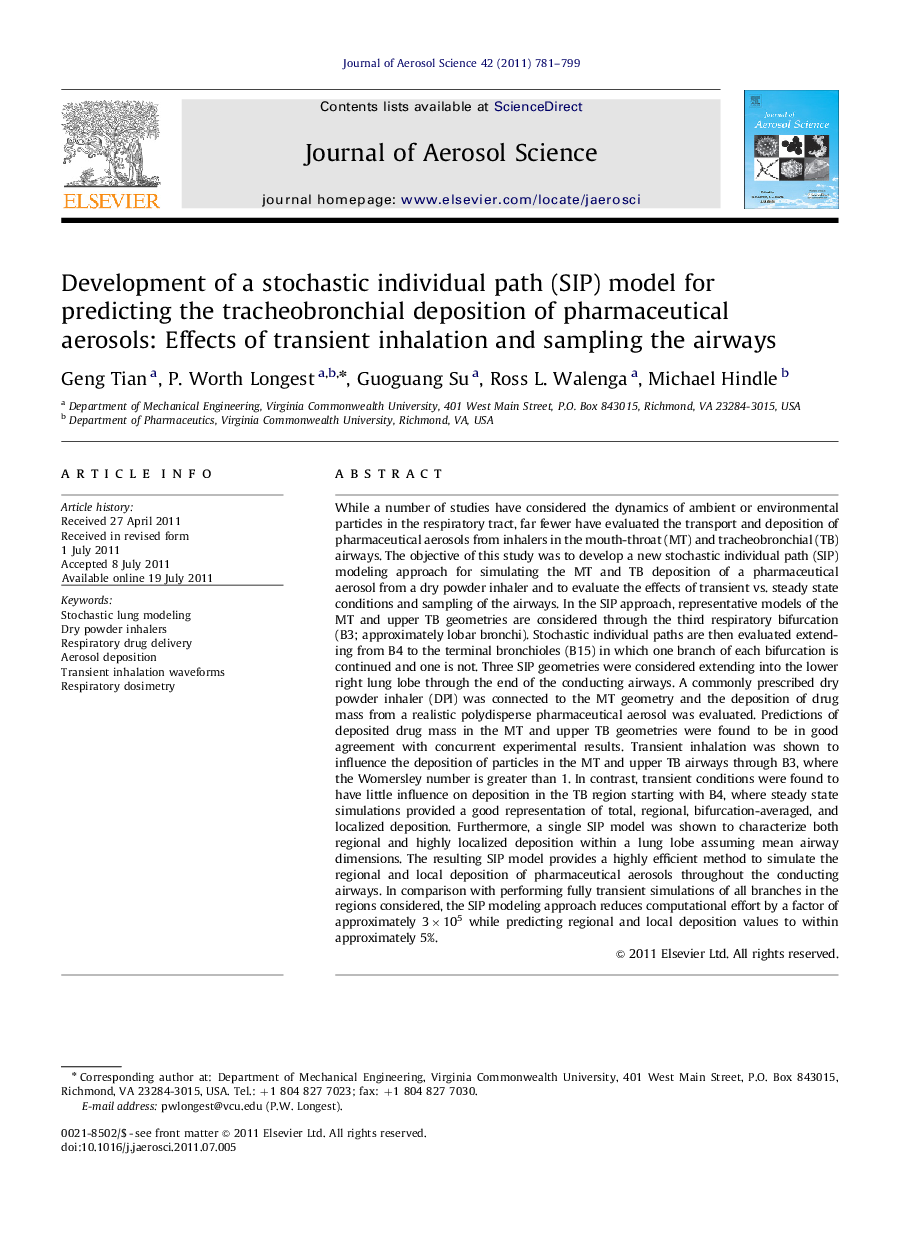| کد مقاله | کد نشریه | سال انتشار | مقاله انگلیسی | نسخه تمام متن |
|---|---|---|---|---|
| 4452752 | 1312099 | 2011 | 19 صفحه PDF | دانلود رایگان |

While a number of studies have considered the dynamics of ambient or environmental particles in the respiratory tract, far fewer have evaluated the transport and deposition of pharmaceutical aerosols from inhalers in the mouth-throat (MT) and tracheobronchial (TB) airways. The objective of this study was to develop a new stochastic individual path (SIP) modeling approach for simulating the MT and TB deposition of a pharmaceutical aerosol from a dry powder inhaler and to evaluate the effects of transient vs. steady state conditions and sampling of the airways. In the SIP approach, representative models of the MT and upper TB geometries are considered through the third respiratory bifurcation (B3; approximately lobar bronchi). Stochastic individual paths are then evaluated extending from B4 to the terminal bronchioles (B15) in which one branch of each bifurcation is continued and one is not. Three SIP geometries were considered extending into the lower right lung lobe through the end of the conducting airways. A commonly prescribed dry powder inhaler (DPI) was connected to the MT geometry and the deposition of drug mass from a realistic polydisperse pharmaceutical aerosol was evaluated. Predictions of deposited drug mass in the MT and upper TB geometries were found to be in good agreement with concurrent experimental results. Transient inhalation was shown to influence the deposition of particles in the MT and upper TB airways through B3, where the Womersley number is greater than 1. In contrast, transient conditions were found to have little influence on deposition in the TB region starting with B4, where steady state simulations provided a good representation of total, regional, bifurcation-averaged, and localized deposition. Furthermore, a single SIP model was shown to characterize both regional and highly localized deposition within a lung lobe assuming mean airway dimensions. The resulting SIP model provides a highly efficient method to simulate the regional and local deposition of pharmaceutical aerosols throughout the conducting airways. In comparison with performing fully transient simulations of all branches in the regions considered, the SIP modeling approach reduces computational effort by a factor of approximately 3×105 while predicting regional and local deposition values to within approximately 5%.
Figure optionsDownload high-quality image (251 K)Download as PowerPoint slideHighlights
► Simulation of a DPI aerosol from the mouth through the terminal bronchioles.
► Develops concept of stochastic individual path (SIP) modeling.
► Transient inhalation affects deposition through the third bifurcation (B3).
► Steady state approximation is appropriate in B4–B15.
► A single SIP geometry can characterize deposition in each lung lobe.
Journal: Journal of Aerosol Science - Volume 42, Issue 11, November 2011, Pages 781–799